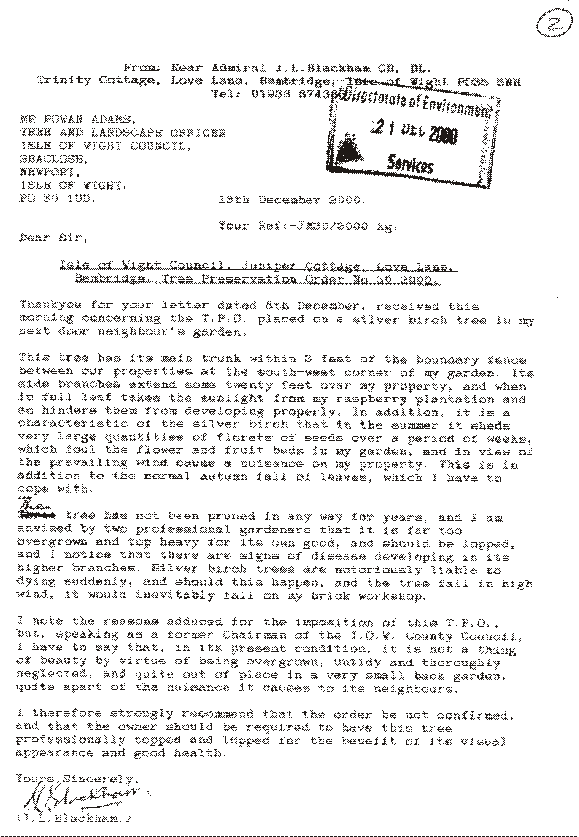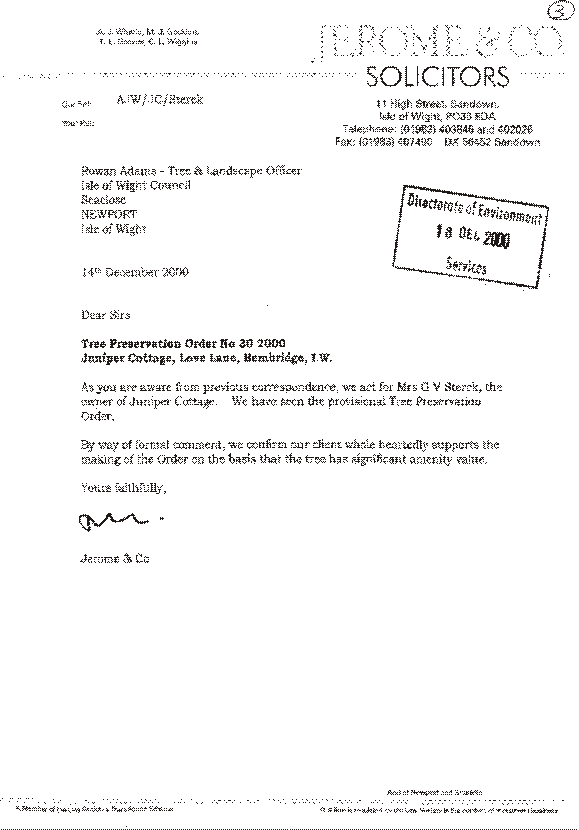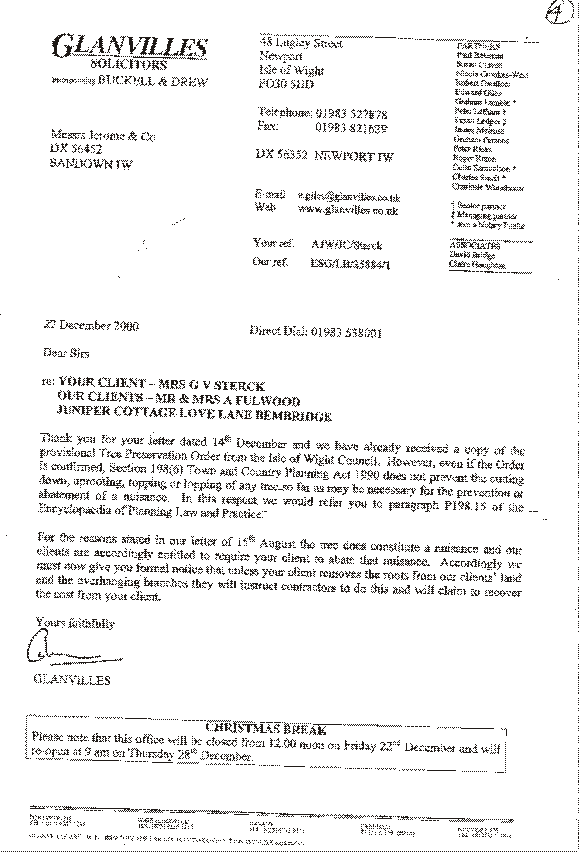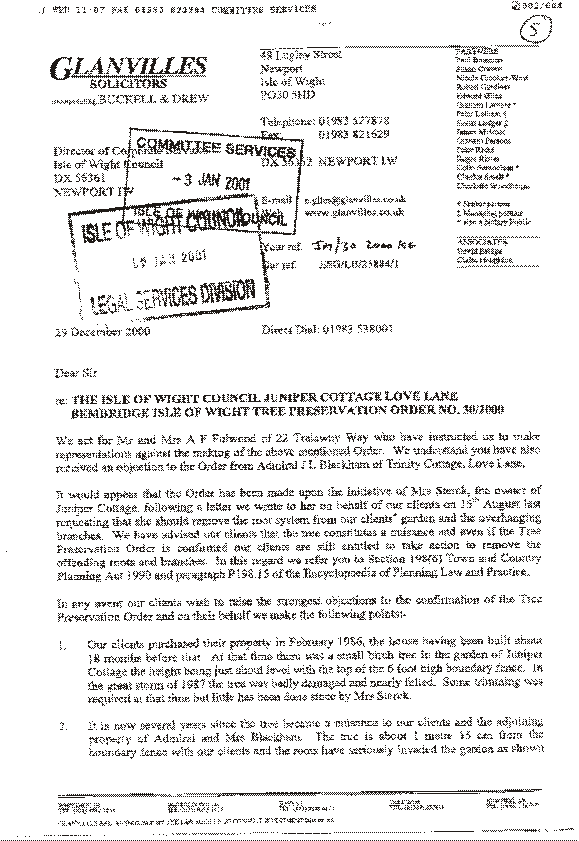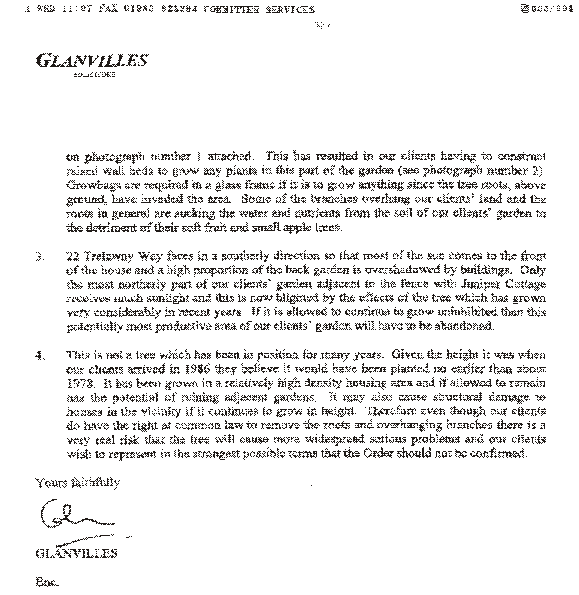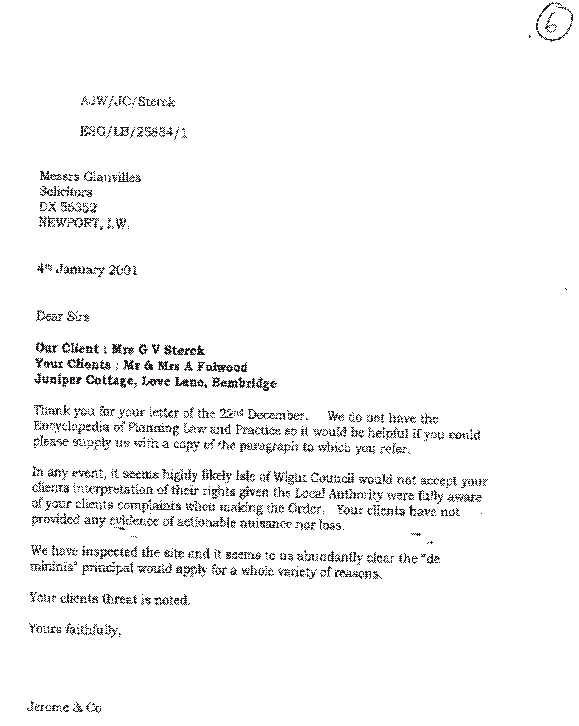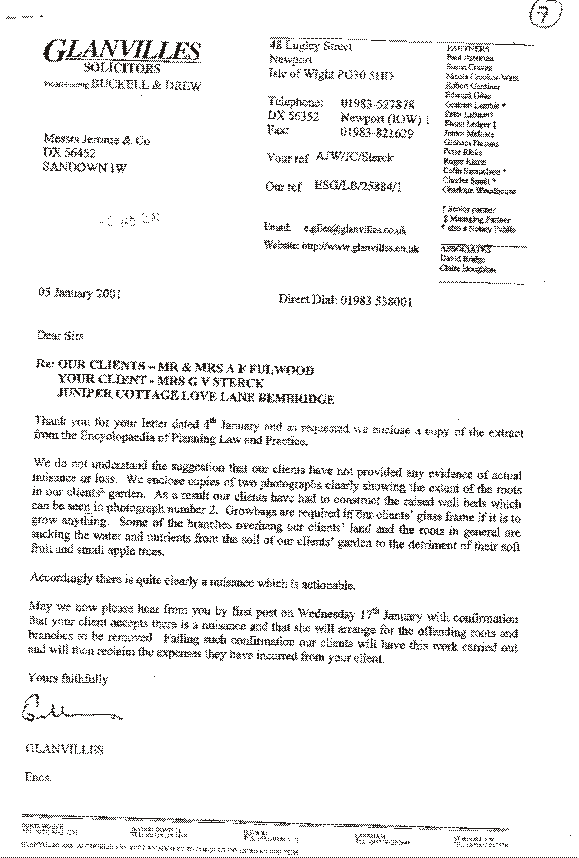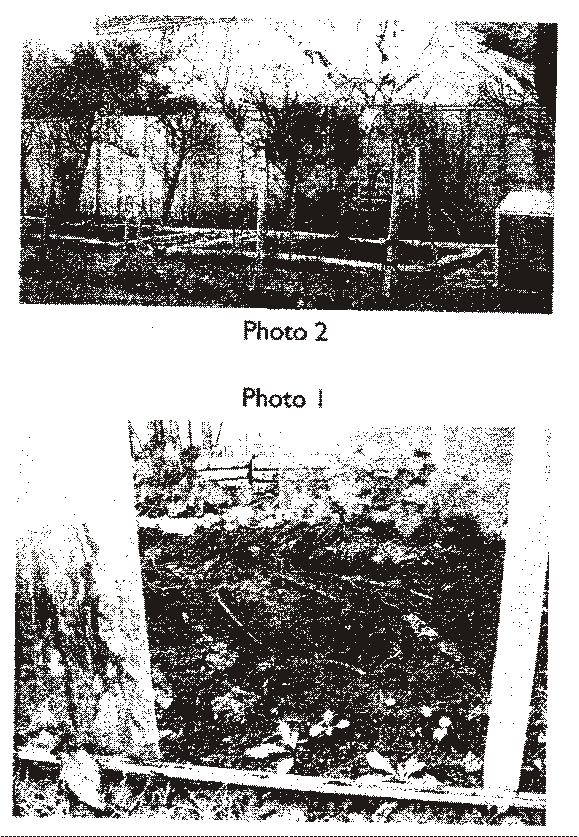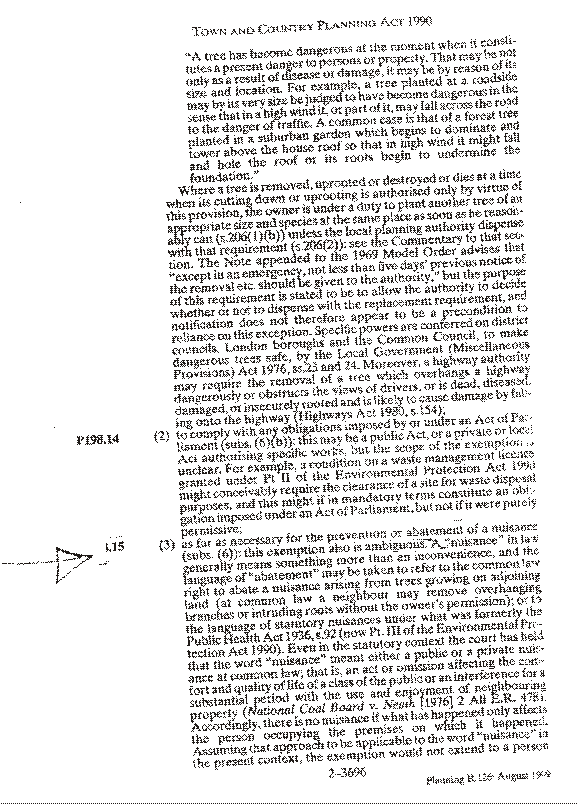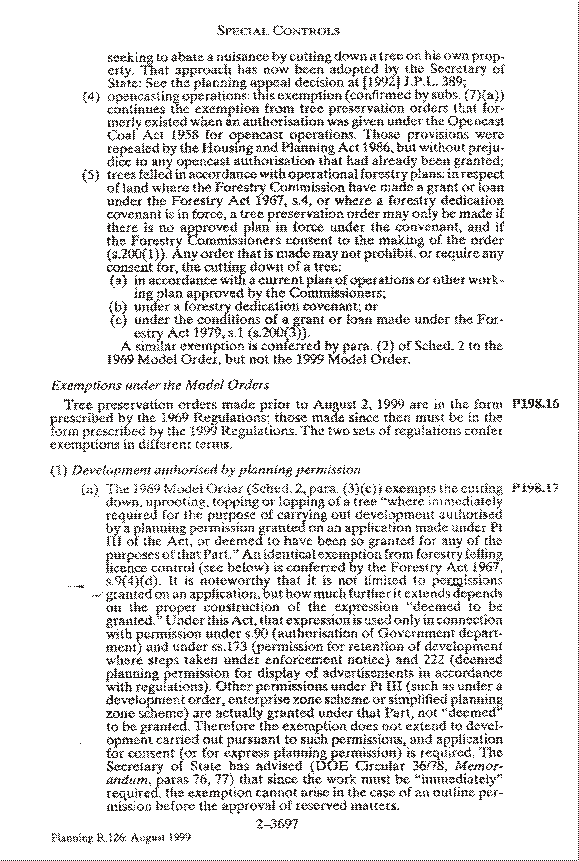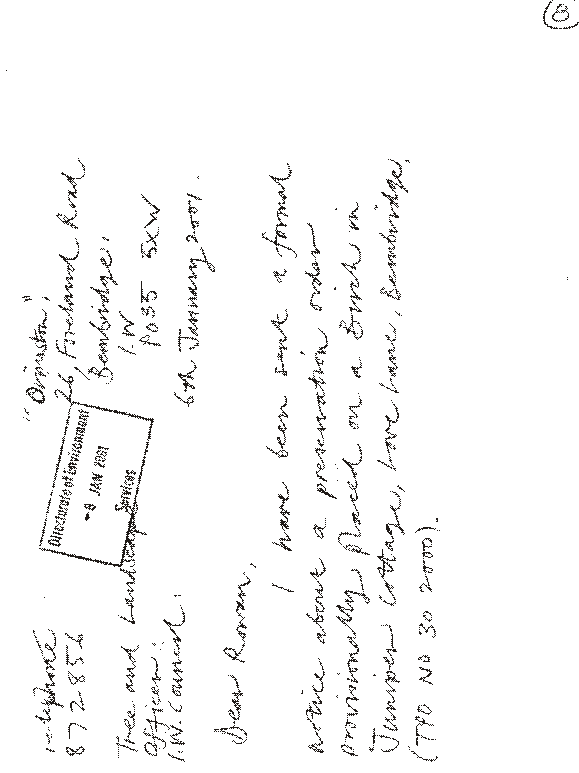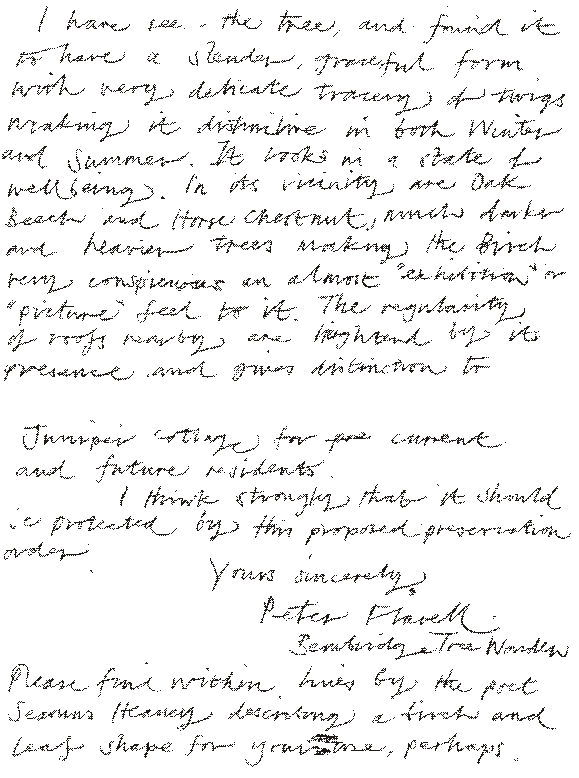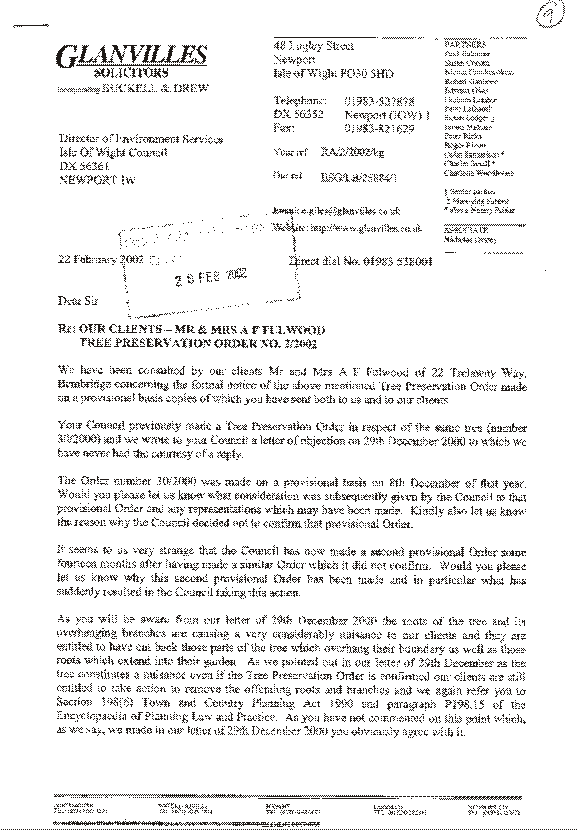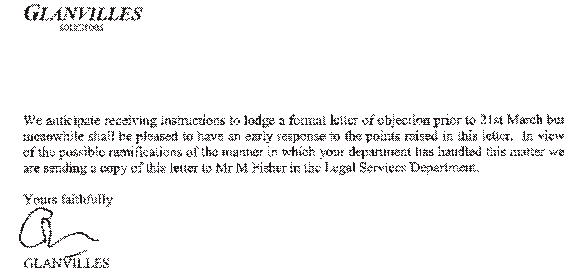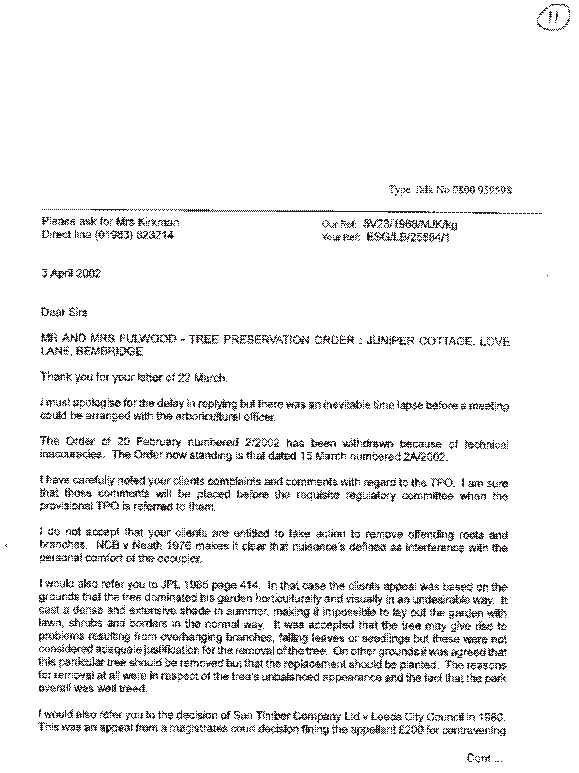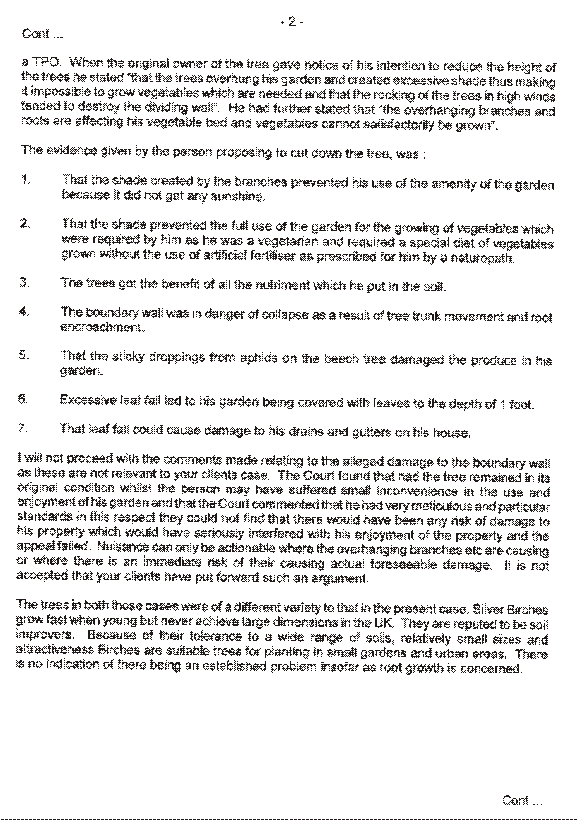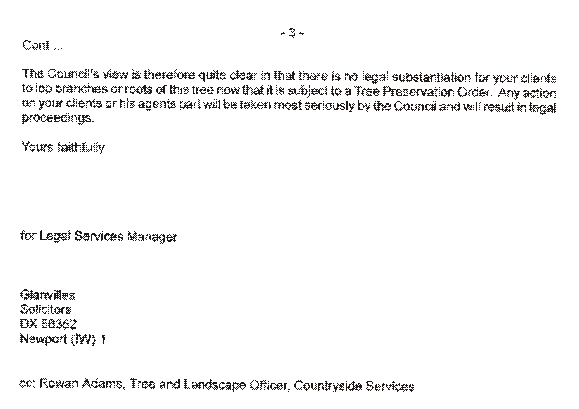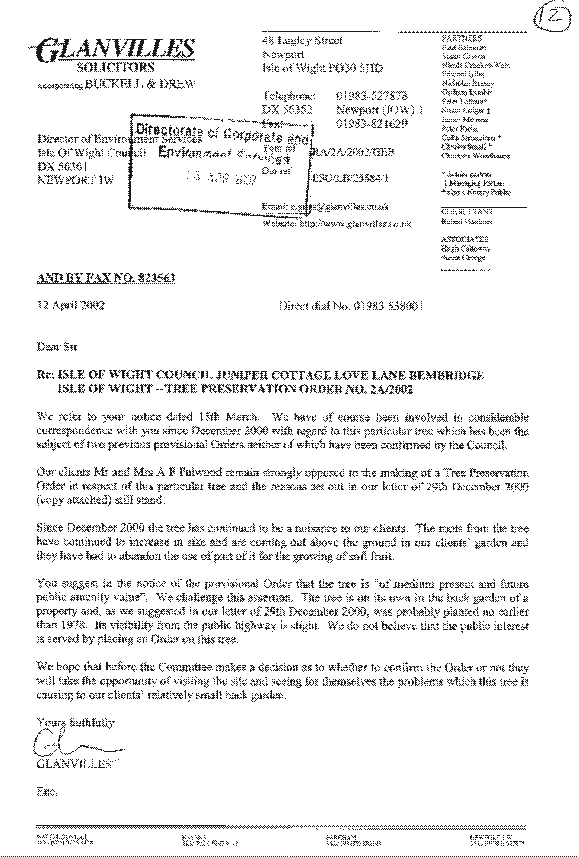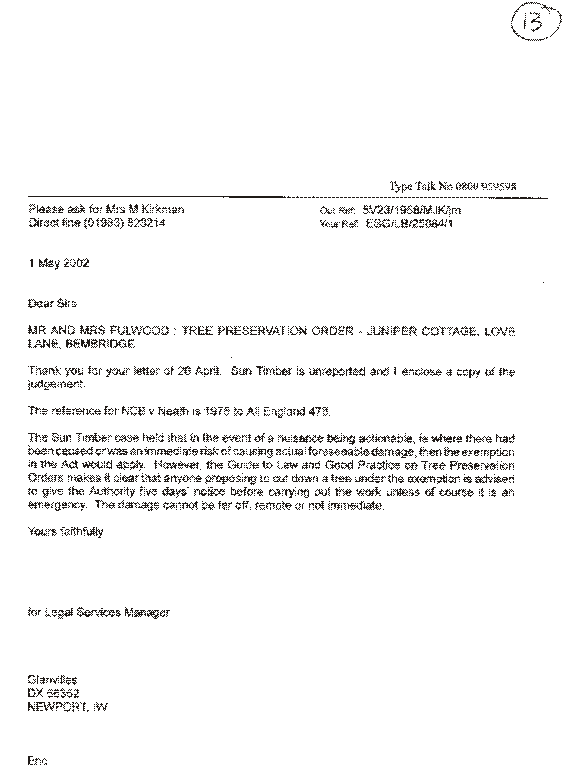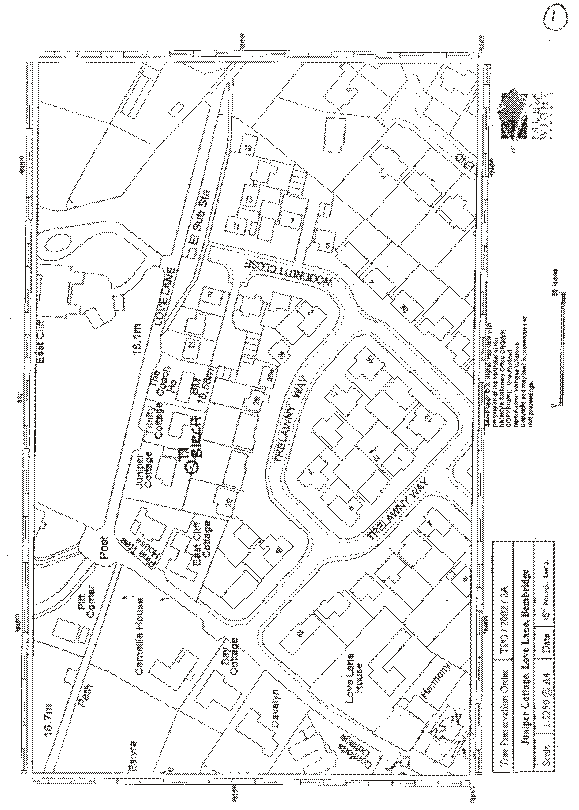
PAPER B1
Purpose: For Decision
Committee: REGULATORY APPEALS COMMITTEE
Date: 25 JULY 2002
Title: TREE AT JUNIPER COTTAGE, LOVE LANE, BEMBRIDGE
TREE PRESERVATION ORDER NO. 2A, 2002
REPORT OF THE STRATEGIC DIRECTOR OF CORPORATE AND ENVIRONMENT SERVICES
SUMMARY
The tree is within the back garden of Juniper Cottage. A TPO was made on 6th March 2002. Two objections have been received. If the Order is to be confirmed this must be done by 5th September.
RECOMMENDATIONS 1. Confirm TPO / 2002 / 2A. |
FINANCIAL IMPLICATIONS
As with any TPO, compensation could be claimed by an applicant if consent to remove tree or for works to the tree were refused, and the refusal resulted in loss or damage.
ENVIRONMENTAL IMPLICATIONS
Removal of the tree would be a loss for the local landscape. It would also set an unwelcome precedent since the reasons given for objection could apply to almost any garden tree.
LEGAL IMPLICATIONS
Regarding the confirmation of the TPO there are no legal implications per se. There is guidance and case law on the issues raised by the solicitors for one of the objectors, which turn on whether the tree and/or its roots and branches are an "actionable nuisance", in other words whether there is an immediate risk of their causing actual foreseeable harm. It would obviously affect the view of the Tree & Landscape Officer if she was of the view, or had evidence, that the tree was causing an actionable nuisance. That is not the case here, nor has any substantive evidence of this nature been provided by the objector to date.
Once the TPO had been confirmed this issue would arise if the objector or their agents were to lop all or part of the tree, as the council would have to review what action, if any, to take.
BACKGROUND
Making of Order
In 1973 the IWCC made The County of the Isle of Wight (Parish of Bembridge) TPO, 1973. Area 1 of this Order covered to the southwest of the bend in Love Lane.
Juniper Cottage and the Trelawny Way development were built after the TPO was made.
In August 2000 the owner of Juniper Cottage contacted the Council because they had received a letter from solicitors acting for the owners of 22 Trelawny Way, asking for a birch tree, growing near the boundary between the two properties, to be removed. The owner did not wish to remove the tree and contacted the Council.
The Tree & Landscape Officer visited both Juniper Cottage and 22 Trelawny Way in October and November 2000, but was unable to negotiate some lesser option such as thinning; the owners of 22 Trelawny Way still wished to have the tree removed completely.
The 1973 Order was only an Area order, so the tree was not marked on the plan; the tree also appeared to be possibly younger than 27 years old and so might not be covered by the 1973 Order. A new Order was therefore made on 8th December 2000.
The original Order, No. 2000 / 30, was not confirmed within the recommended six months, and so a second Order, No. 2002 / 2, was made on 20th February 2002. Solicitors acting for the owners of 22 Trelawny Way pointed out an inconsistency in dates on this Order, so a new Order, No. 2002 / 2A, was made on 15th March 2002. It is this Order which would need to be confirmed by 14th September 2002 in order to be made permanent.
Objections
Two objections were received, from solicitors acting on behalf of the owners of 22 Trelawny Way, which is to the south of Juniper Cottage, and from the owner of Trinity Cottage, which is to the east of Juniper Cottage. Letters from solicitors acting on behalf of the owner of Juniper Cottage, and from the owner themselves, confirmed their support for the Order. The local Bembridge tree warden also wrote expressing support for the Order. (See background documents).
Objections from 22 Trelawny Way were made on the grounds that branches overhanging and roots from the tree growing into the garden of 22 Trelawny Way constitute a nuisance. The roots are said to be “sucking the water and nutrients from the soil of our clients’ garden to the detriment of their soft fruit and small apple trees”. The part of the garden nearest the tree is said to be “blighted by the effects of the tree”, and that if “it is allowed to grow uninhibited then this potentially most productive part of our clients’ garden will have to be abandoned”. It is also claimed that it might in future cause structural problems to houses in the vicinity.
Objections from Trinity Cottage were made on the grounds that the tree takes sunlight from raspberries in their garden, which “hinders them from developing properly”; that the tree sheds large quantities of seeds in addition to leaves; that it is “far too topheavy and overgrown” and that it should be “topped and lopped”; and that “silver birch trees are notoriously liable to dying suddenly”, and that if the tree died and fell it would fall on the owners’ workshop.
Comments on objections
However the grounds for objection would not appear to constitute any actionable nuisance. Nuisance can only be actionable where the overhanging branches or roots are causing, or where there is an immediate risk of their causing, actual foreseeable damage.
The tree is to the north of 22 Trelawny Way and so is in the position least likely to deprive it of sunshine, and to the west of Trinity Cottage, therefore only blocking sunshine for part of the day. Birches never grow particularly large, and they cast only a light shade. There are other parts of the objectors' gardens which receive direct sunshine, or which could receive more direct sunshine if hedges were cut to a lesser height.
Birch trees are considered to have low water uptake by the British Standard Guidance on Trees in relation to Construction and by the National House Building Council. The range of plants that will grow beneath birch trees is far wider than that for many other trees species. The effect of the tree appears to be that the neighbours cannot grow particular species or varieties of maximum potential vigour; the tree does not stop them growing any plants at all, nor does it stop the growth of those plants being of medium vigour.
The effect of the tree is that the neighbours find it harder to grow the plants they want to in its immediate vicinity; and that the yields of those plants are lower than they would be if the tree were not there. The Tree & Landscape Officer could see no evidence that plants at 22 Trelawny Way were growing poorly, or that they were directly damaged by the tree, or that particular plants would not grow at all beneath it.
Because of their relatively small size and low water uptake, birch tree give rise to claims for subsidence damage very rarely, and no evidence has been submitted to suuggest that such damage has occurred or might occur in future.
Birch trees are not particularly prone to dying suddenly, but even if they were this would not be grounds for not confirming the Order. If the tree did die or become dangerous, it would then be exempt from the need for local planning authority consent, and it could be removed.
The tree did not appear to the Tree & Landscape Officer to be topheavy, and was certainly not in need of being topped and lopped - topping harms all tree species, but is especially harmful to birch, ruining its shape, and rendering it susceptible to decay. Confirming the Order would not prevent necessary work being carried out, merely require the consent of the local planning authority in addition to the consent of the owner.
RECOMMENDATIONS
Confirm TPO / 2002 / 2A.
If the order is confirmed it will ensure the continued existence of the tree for the foreseeable future.
If the order is not confirmed, the tree might be under threat. The owners of adjoining properties may legally cut back roots and branches to the boundary, as long as they do not compromise the health, safety, and amenity of the tree. However as the tree is close to the boundary, cutting back to the boundary would have a major impact on it. The owner of the tree might not be able to effectively prevent the owners of adjoining properties from cutting back beyond the point from which the tree could recover, and it might be damaged to the point at which it needed to be removed on safety grounds. The owner of the tree might be able to pursue a claim for damage, but it is possible that the tree itself would not be replaced.
BACKGROUND DOCUMENTS
1. Plan from TPO No. 2002 / 2A
2. Letter from owner of Trinity Cottage, dated 13th December 2000, received 21st December 2000.
3. Letter from solicitors acting for owner of Juniper Cottage, dated 14th December 2000, received 18th December 2000.
4. Letter from solicitors acting for owners of 22 Trelawny Way, dated 22nd December 2001, to solicitors acting for owner of Juniper Cottage, and forwarded to IWC, received 12th January 2001.
5. Letter from solicitors acting for owners of 22 Trelawny Way, dated 29th December 2000, received 3rd January 2001.
6. Letter from solicitors acting for owner of Juniper Cottage, dated 4th January 2001, to solicitors acting for owners of 22 Trelawny Way, and forwarded to IWC, received 12th January 2001.
7. Letter from solicitors acting for owners of 22 Trelawny Way, dated 5th January 2001, to solicitors acting for owner of Juniper Cottage, and forwarded to IWC, received 8th January 2001.
8. Letter from Bembridge tree warden, dated 6th January 2001, received 8th January 2001.
9. Letter from solicitors acting for owners of 22 Trelawny Way, dated 22nd February 2002, received 26th February 2002.
10. Letter from owner of Juniper Cottage dated 14th March 2002 received 15th March 2002.
11. Letter from Legal Services section to solicitors acting for owners of 22 Trelawny Way, dated 3rd April 2002.
12. Letter from solicitors acting for owners of 22 Trelawny Way, dated 12th April 2002, received 15th April 2002.
13. Letter from Legal Services section to solicitors acting for owners of 22 Trelawny Way, dated 1st May 2002.
M J A FISHER
Strategic Director
Corporate and Environment Services

